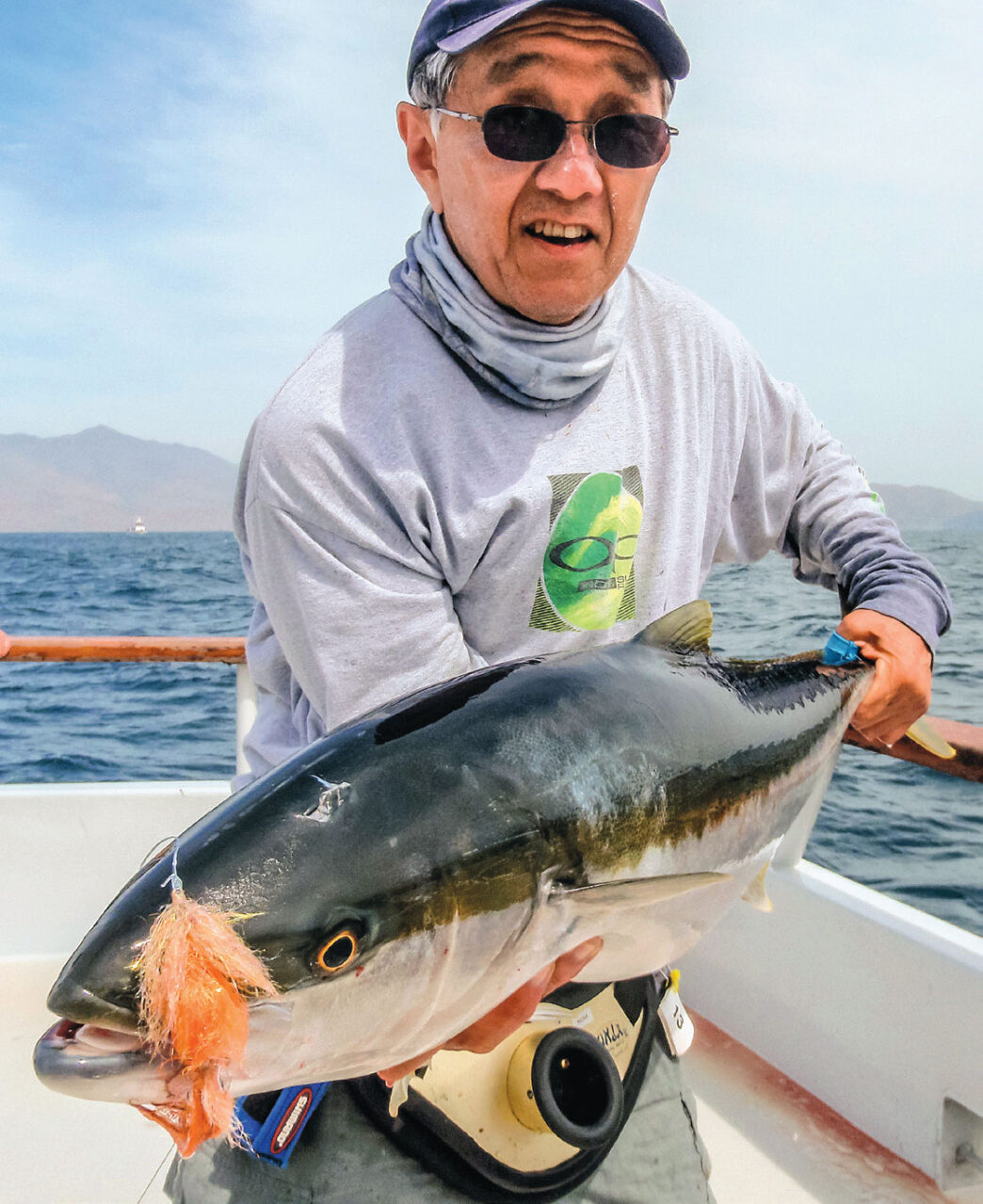As cephalopods, squid exhibit relatively high intelligence among invertebrates. They can school and feed in large packs, often ambushing their prey like lions in tall grass on the savannah. I remember one early, foggy morning, motoring very slowly out of San Diego harbor in poor visibility and seeing sticklike branches piercing the surface of the glassy water as far as visibility allowed us to see. It was a very eerie sight, especially when I realized this water forest was alive. These were the tentacles of inverted Humboldt squid, and the squid were feeding on the surface on large bait balls of sardines. I kept thinking to myself, “Don’t fall into the water!” It wouldn’t have been pretty. Those four-foot-long squid would have swarmed and ripped me to pieces with their birdlike beaks.
Since then, I have had tremendous respect for these sea creatures — they can leave hickies the size of hubcaps on sperm whales. The good news is that the majority of the squid you most likely will encounter in the ocean are the size that you eat, not the size that can eat you, and they’re the perfect size to imitate with feathers and synthetic materials. Q’s Articulated Calamari Squid Fly is how I do it. The majority of our local squid are no more than a foot long — calamari, not the giant squid of the briny deep. They are an important food source, and are used as bait, for many local game fish, including calico bass, halibut, sand bass, white seabass, and yellowtails. The squid along our coast travel inshore from Baja Mexico north to Alaska and can be found up to two hundred miles offshore. Their colors can vary between a bluish white to mottled goldish brown. They have beautiful orange, purple, and black speckles along their mantles and tentacles. Squid can easily change from white to dark red or brown when they get agitated or during feeding.
Tying Q’s Articulated Calamari Squid Fly is a two-stage process. First you tie the head, then you tie the body. The steps are illustrated on the facing page.
Stage 1: The Head
Thread: Brown or orange 210 denier
Hook: 3/0 Gamakatsu SC17 tarpon fly hook
Tentacles: Orange Krystal Flash, orange Krystal Chenille, two long, thin grizzly saddles, tan ostrich herl
Head: Orange 1-inch EP Tarantula Hairy Legs Brush
Eyes: Fish-Skull Living Eyes (10 mm), “Wind” color, plus Zap-A-Goo
Step 1. Place the hook in the vise and cover the shank with thread. At the bend, tie in four pieces of orange Krystal Flash and splay two long, thin grizzly hackles. Add a small ball of Krystal Chenille over the wraps.
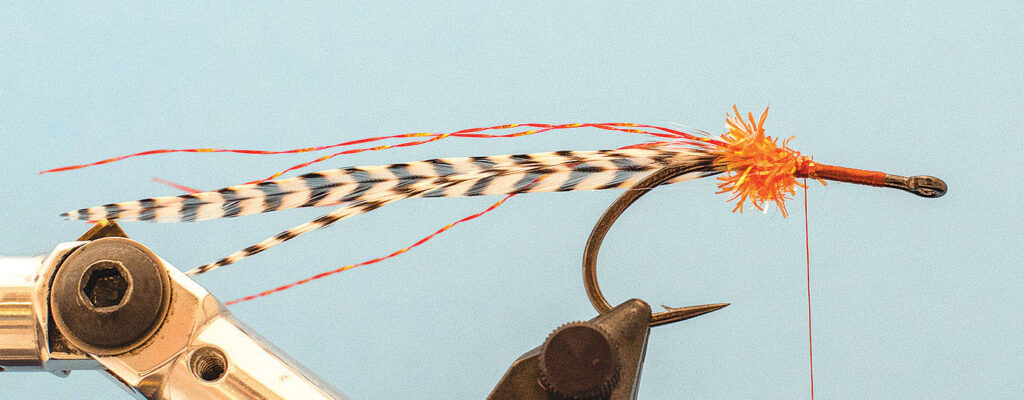
Step 2. Tie in four short clumps of three to four tan ostrich herl feathers behind the chenille ball, splaying them out. The ostrich herl clumps should wrap 360 degrees around the shank.
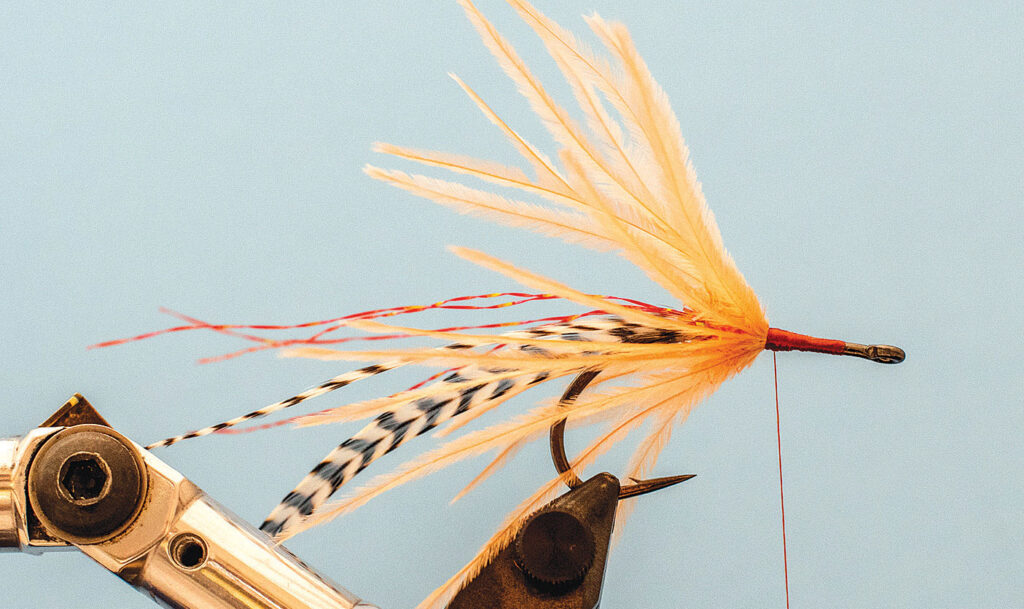
Step 3. Tie in the Tarantula Brush and palmer it forward, pulling back the fibers as you go, stopping 1/8 of an inch behind hook eye. Secure the material and trim the excess.
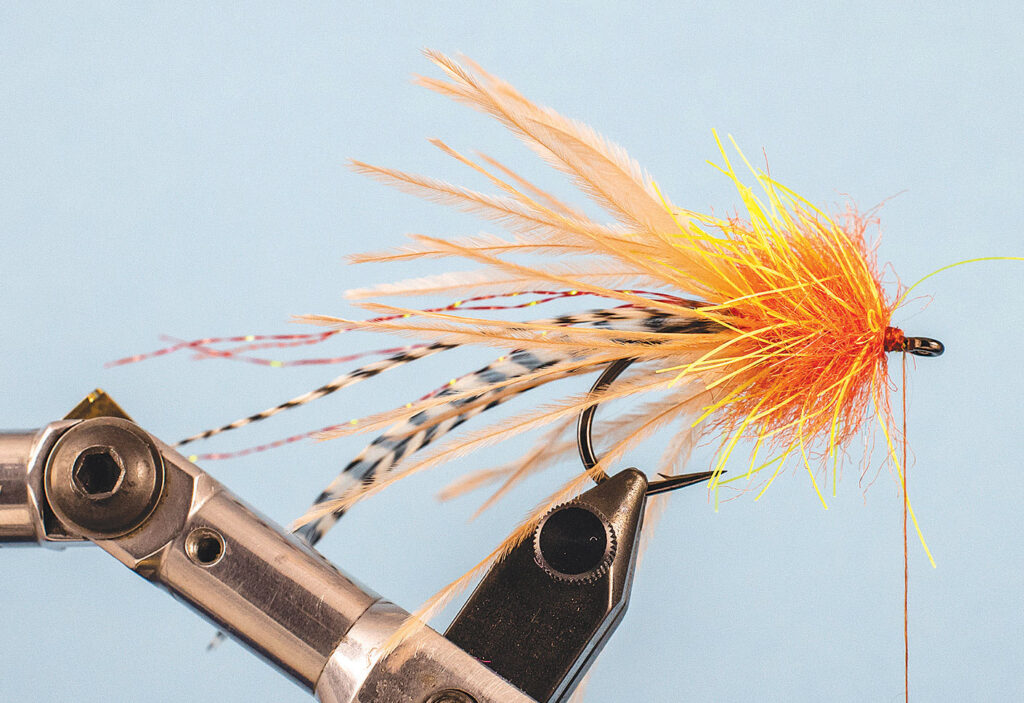
Step 4. Add a large eye to each side with ZapA-Goo to secure the eyes.
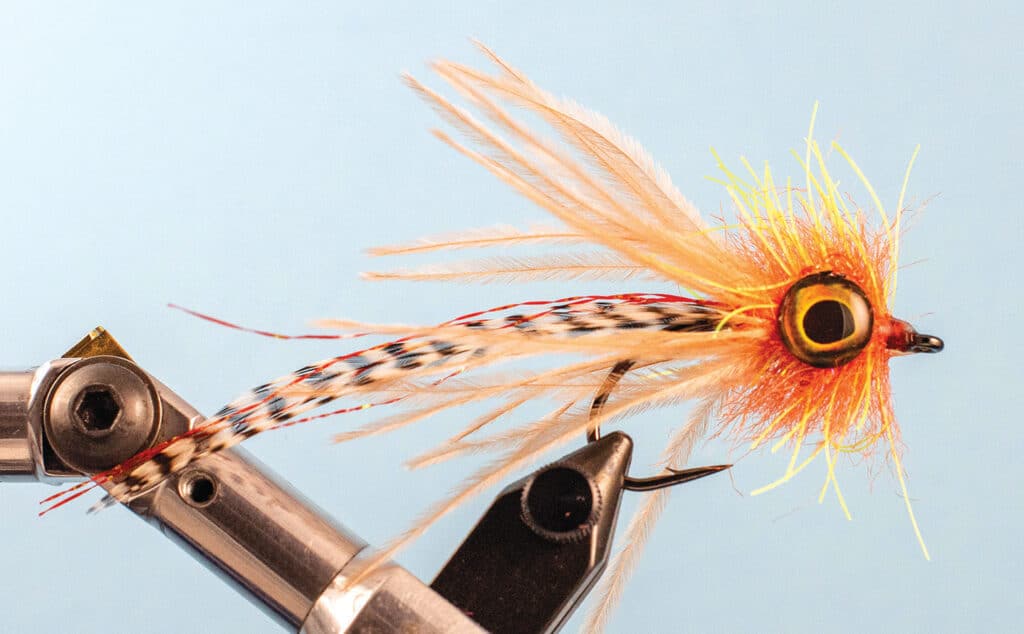
Stage 2: The Body
Shaft: Fish-Skull Chocklett’s Articulated Big Game Shank, 3.625 inches
Mantle: Tan or white 3-inch EP Streamer or Foxy Brush
Weight: .030-inch lead wire, 10 to 15 wraps
Color: Orange, purple, black waterproof markers
Finish: Devcon Clear Five Minute Epoxy or Tuffleye Blue Light Cured Epoxy
Step 5. Now attach the hook to the rear end of the shank in the vise by clipping the eye of the hook onto the 3-inch shank, then mounting the eye of the shank in the jaws of the vise.
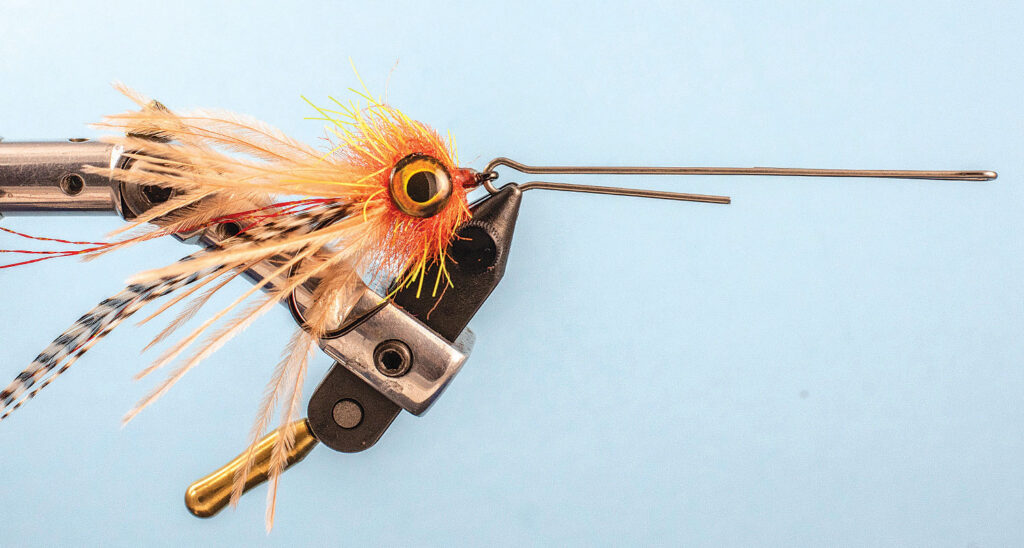
Step 6: Wrap thread the length of the shank to lock in the hook. Add 10 to 15 wraps of heavy lead wire at about the first third of the shank (toward its eye).
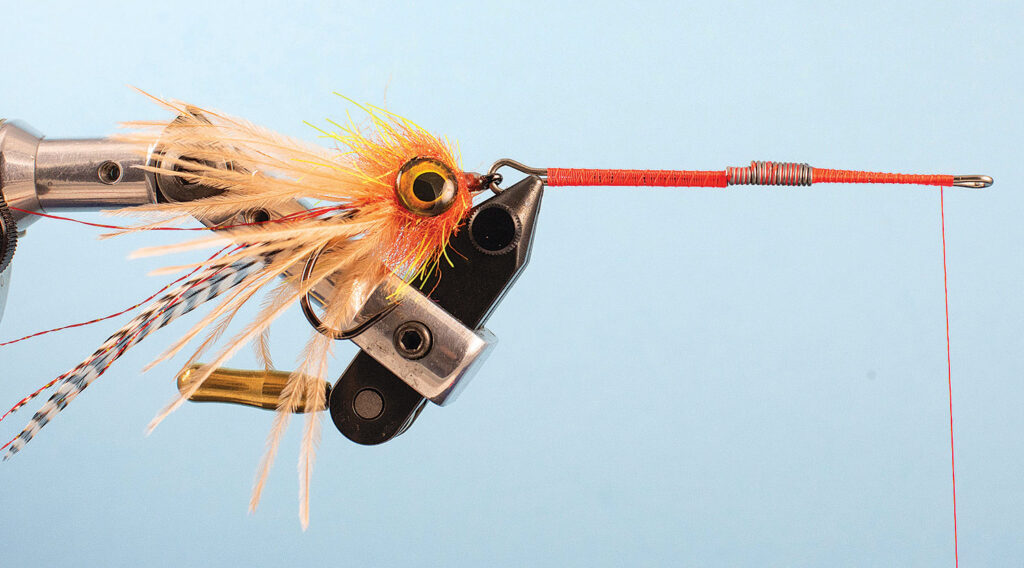
Step 7. Start the brush in front of the shank’s rear closure and palmer it forward until to 1/8 of an inch behind the shank’s eye, pulling back on the fibers so they lie down in front of each other.
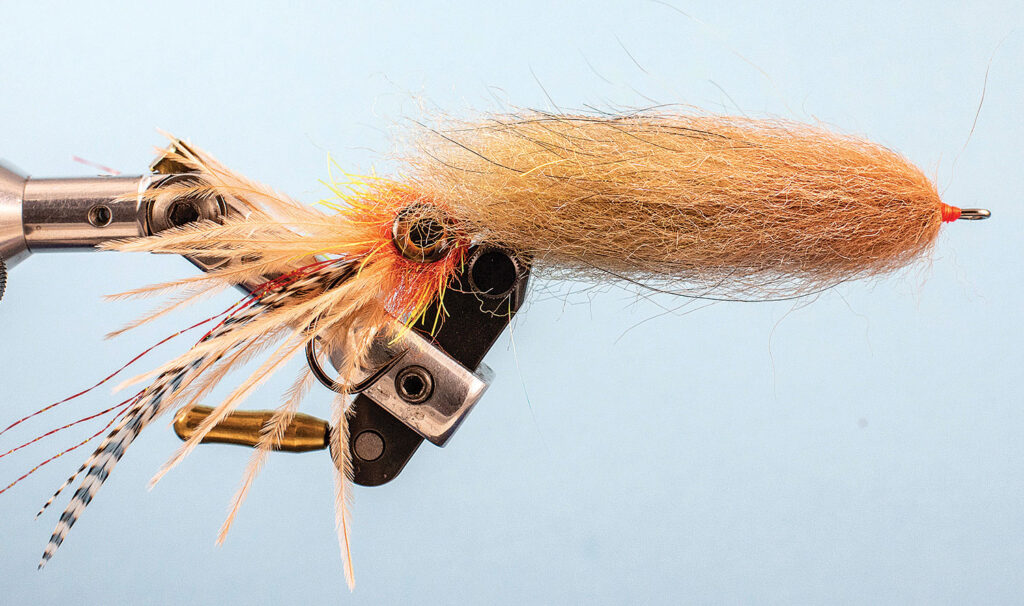
Step 8. Cut the brush’s wire core with a nail clipper and, with your thumb, bind the wire brush back, then secure it with thread and cement. Add marker dots for realistic effect. Coat final wraps with finish.
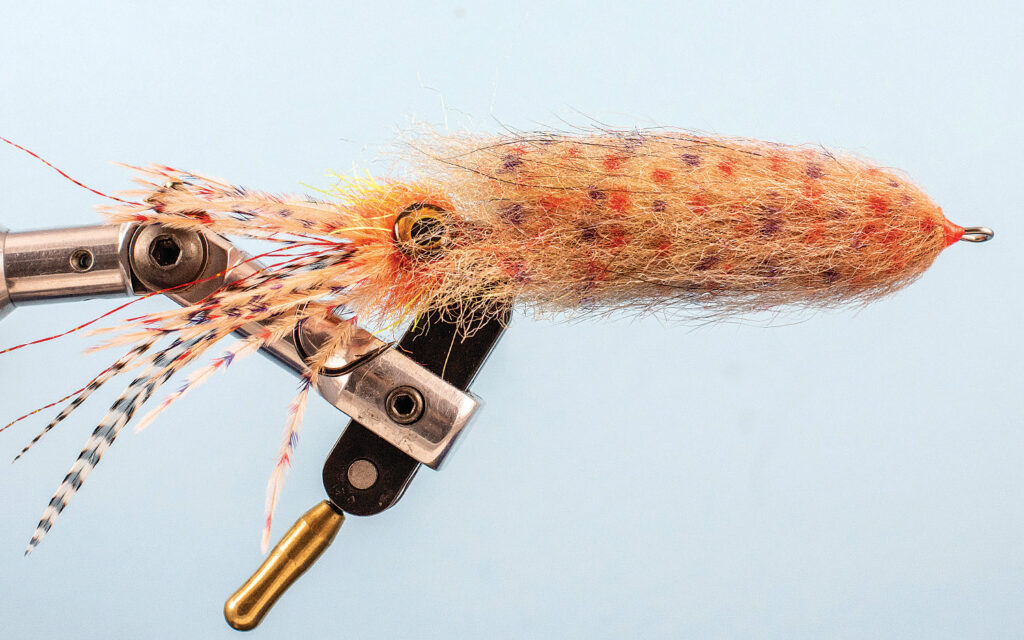
How to Fish Q’s Articulated Calamari Squid Fly
To fish these flies, I like to strip them with a cadence that mimics the erratic pulsing movement of a squid. A pause, a strip, a pause, will give the fly a jerky up-and-down motion and allow it to drop, which makes it irresistible to most hungry predators. You can vary where you weight the fly along the shank to get different sinking actions, too. It is best to use a Lefty Kreh Nonslip Mono Loop to maximize swing and help the fly sink nose down. This fly can be fished shallow or deep. I have fished it effectively in deep water with heavy sinking lines for yellowtails and calico bass and also near the surface in specific situations. My world-record white seabass, for instance, ate a squid fly near the surface in just 20 feet of water. I was using a clear intermediate fly line and allowed the fly to sink about 3 feet below the surface. Then it got crushed.
Tie a few and keep them on hand when fly fishing both inshore and offshore. You never know when these tasty creatures will show up on the menu.




